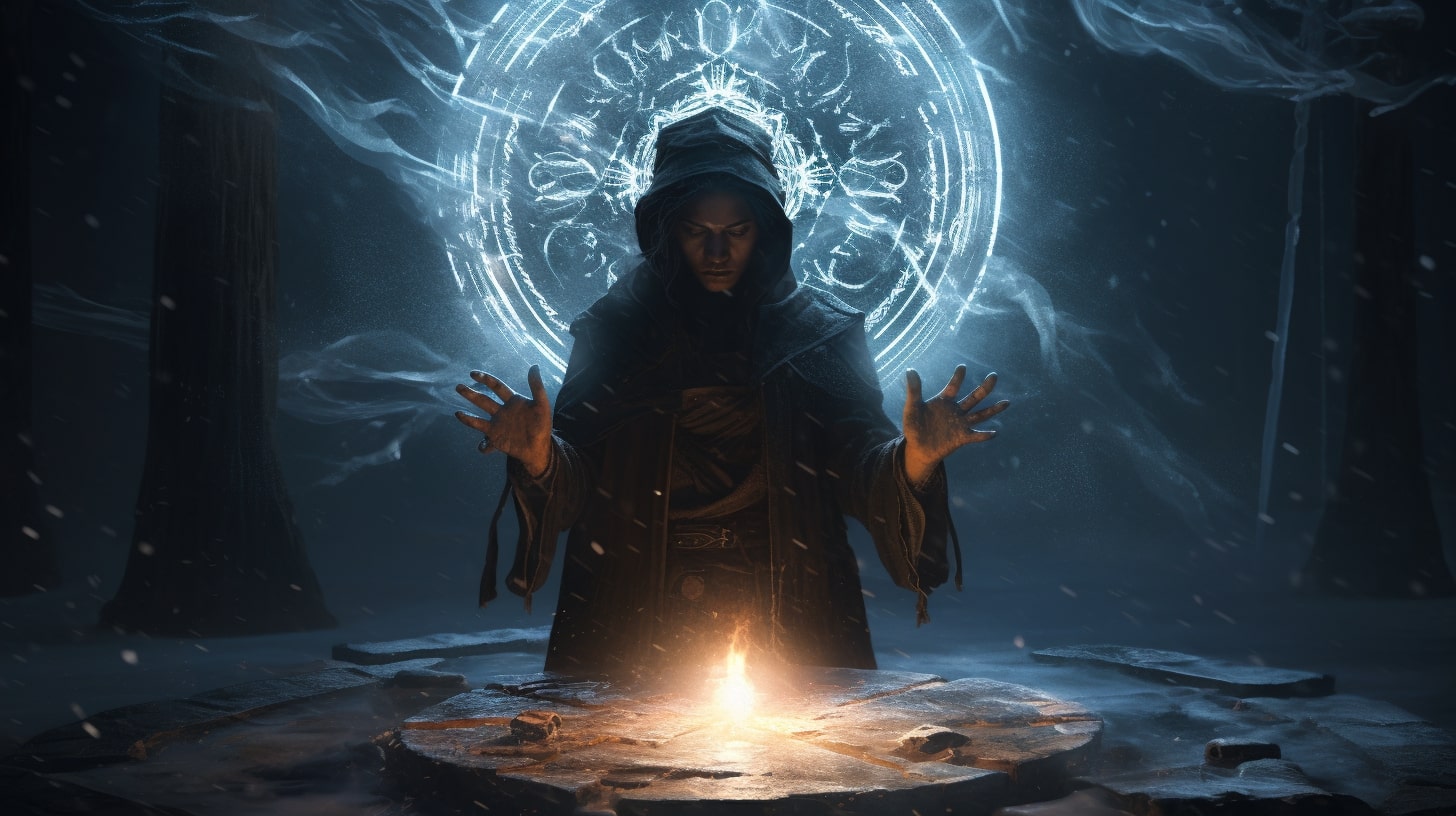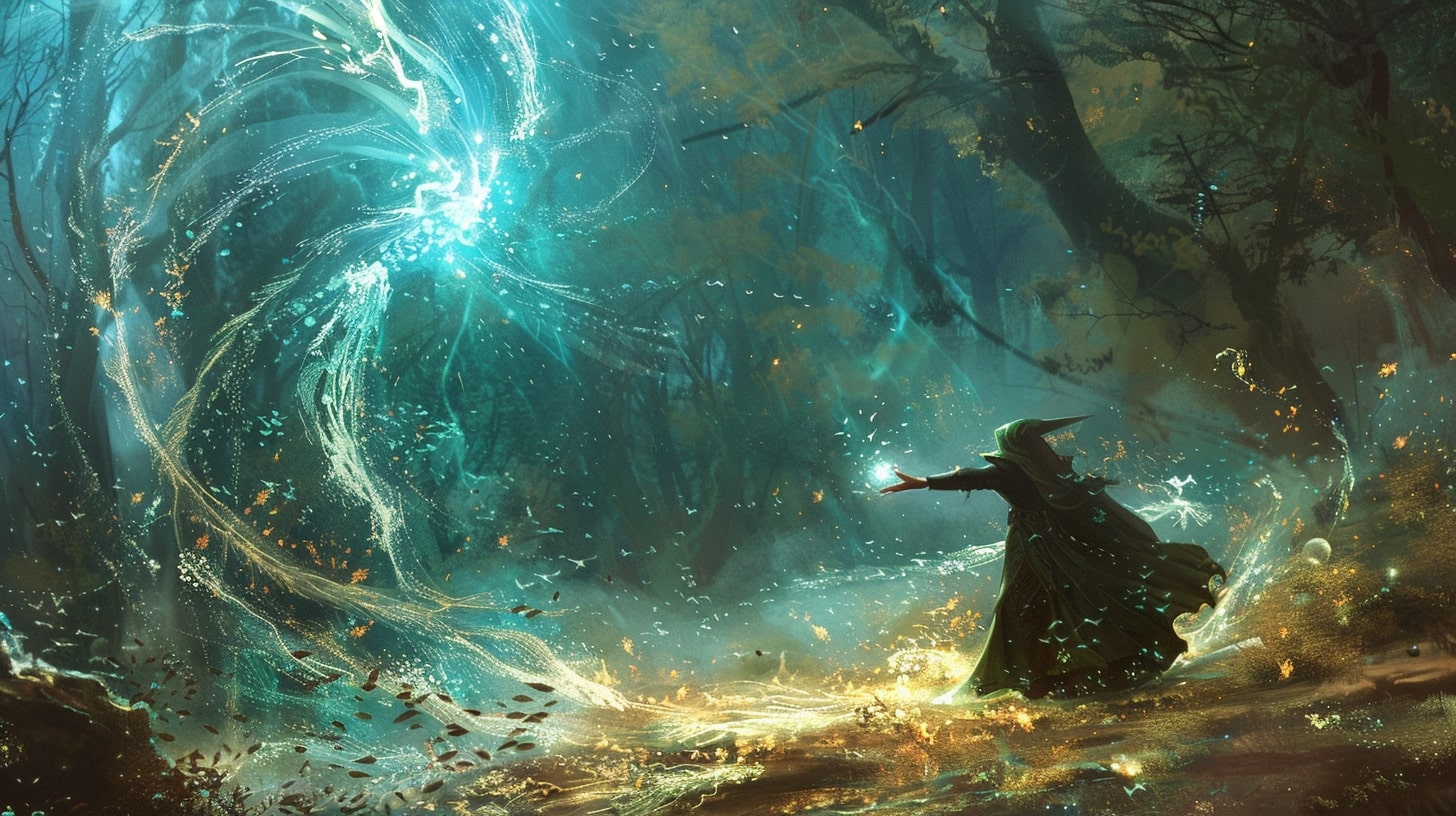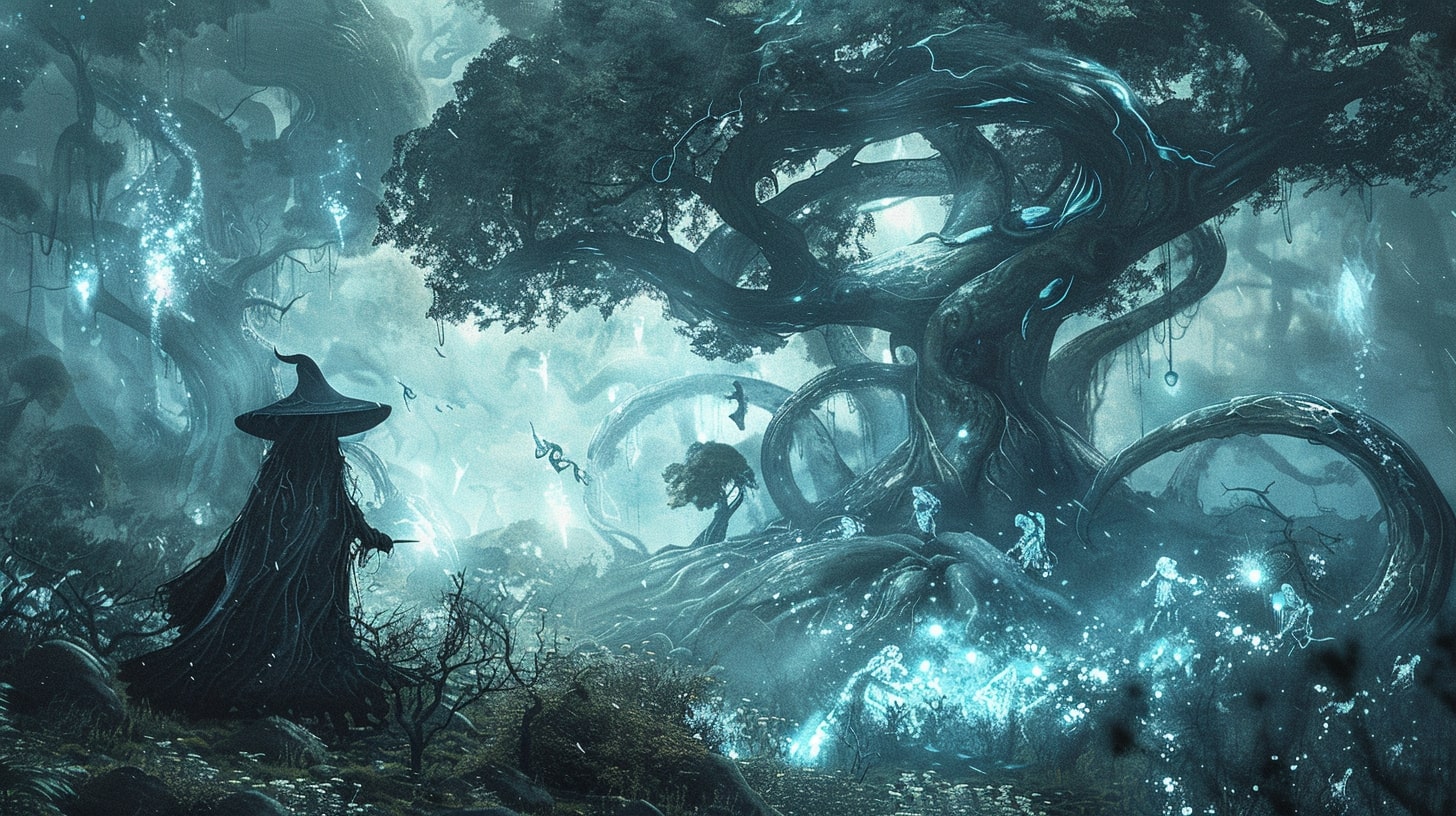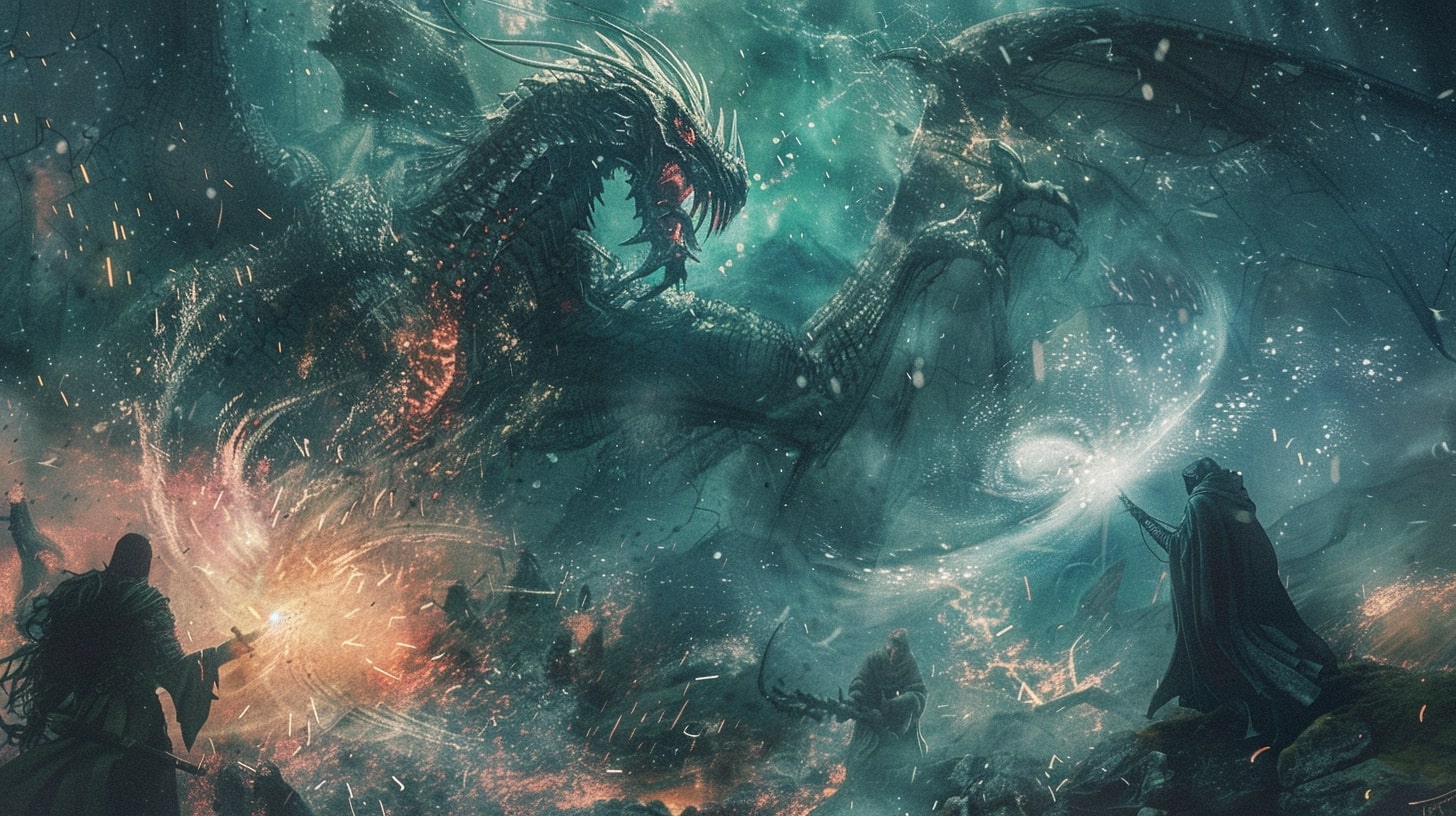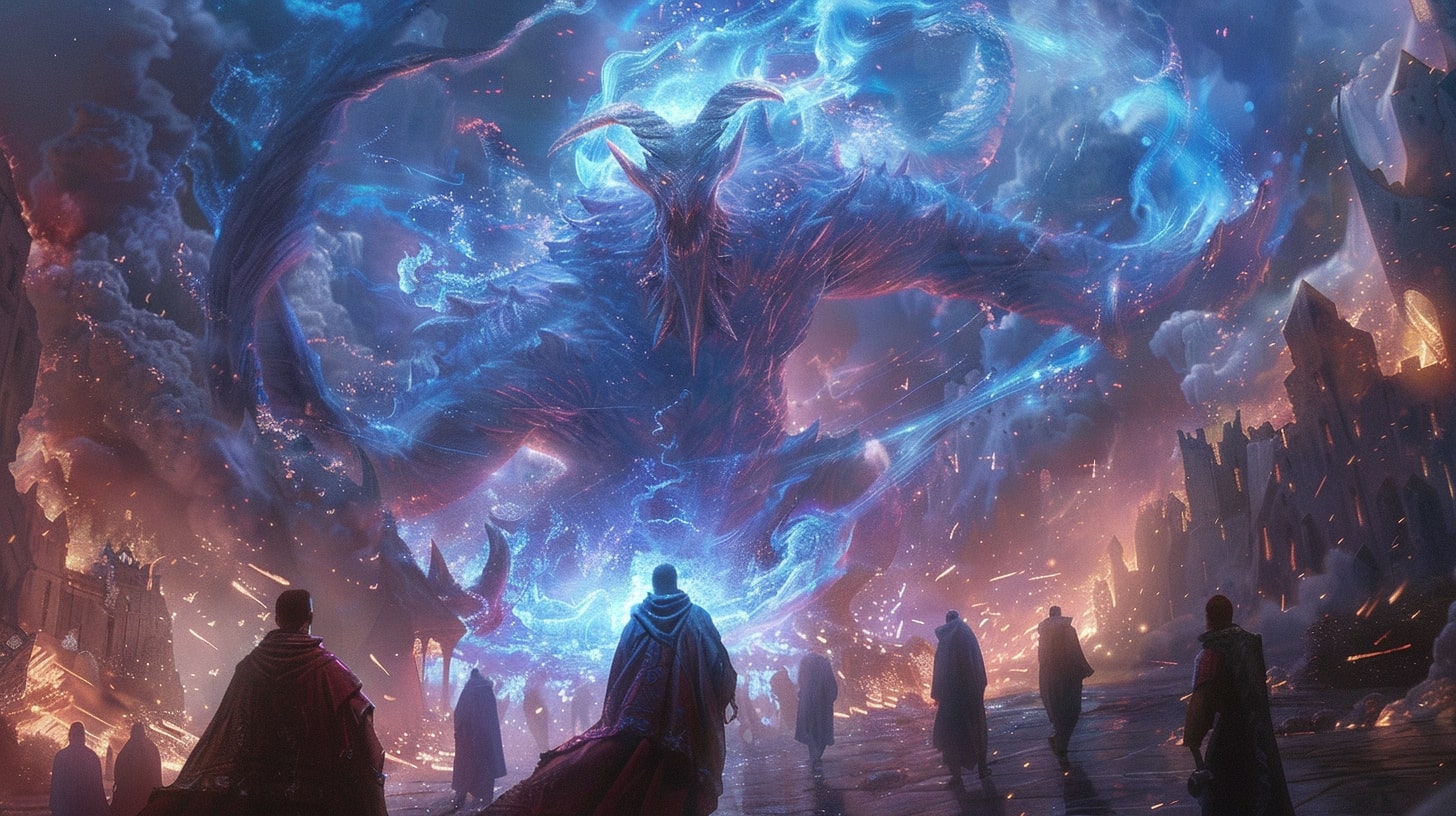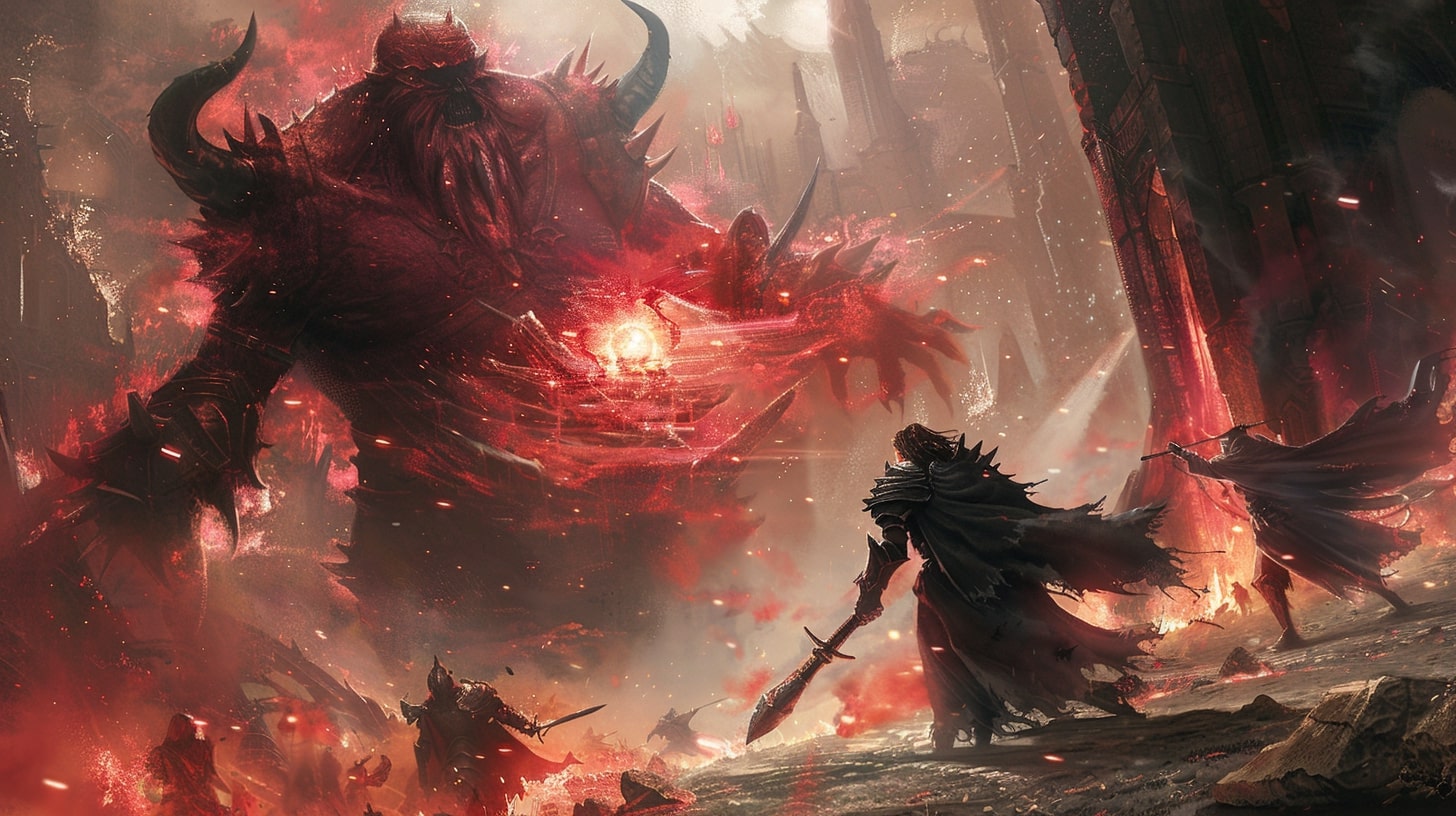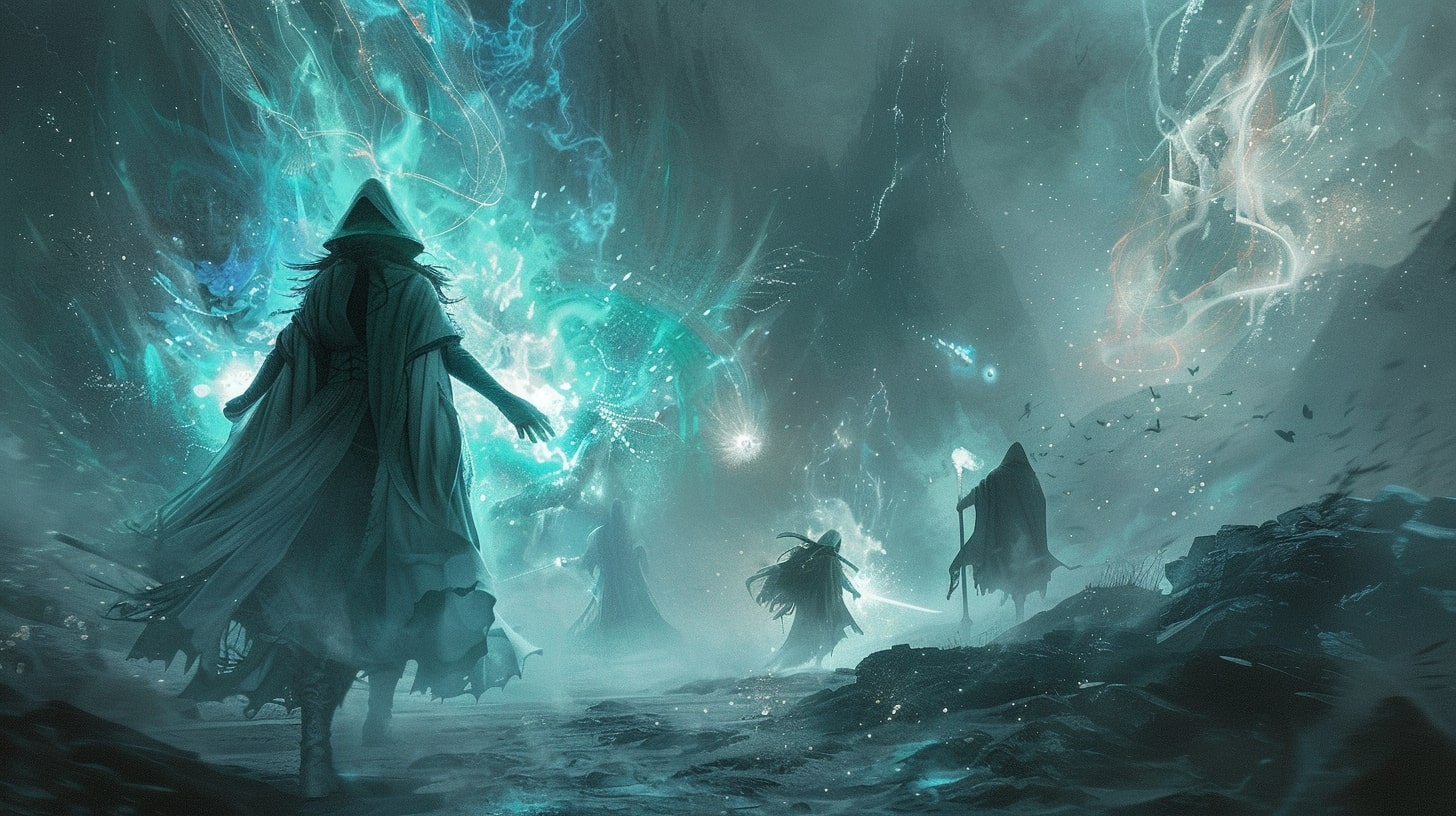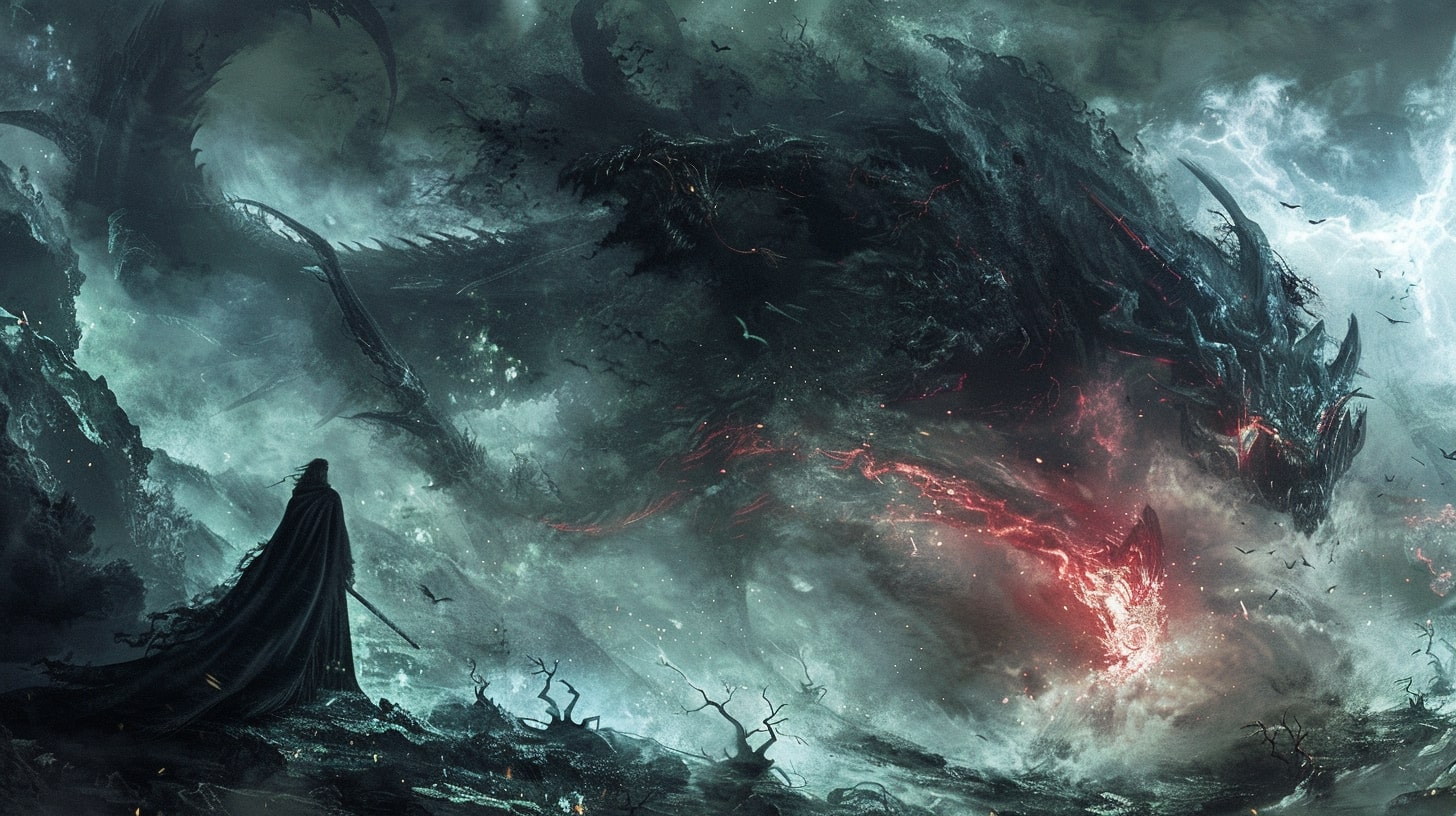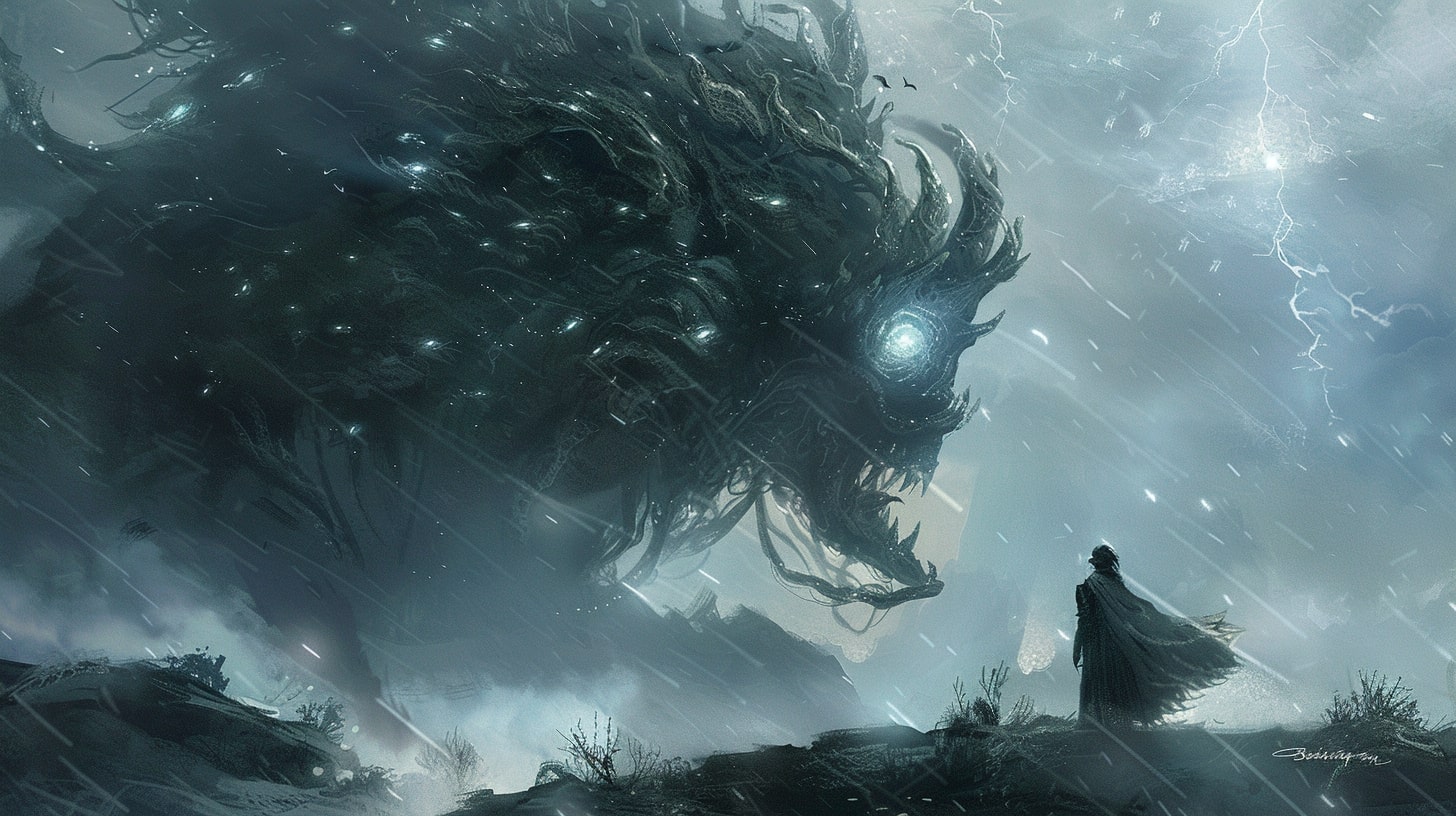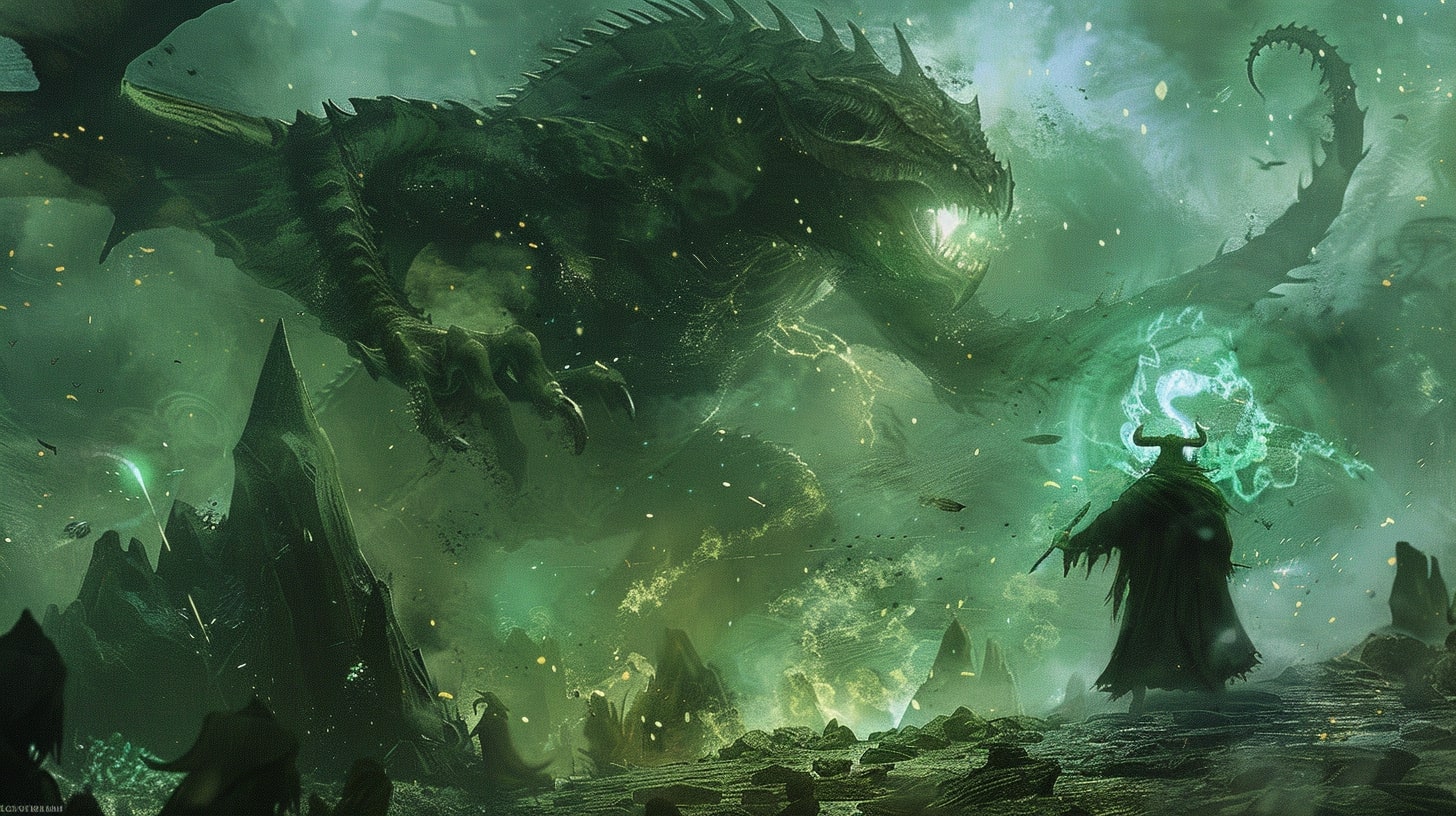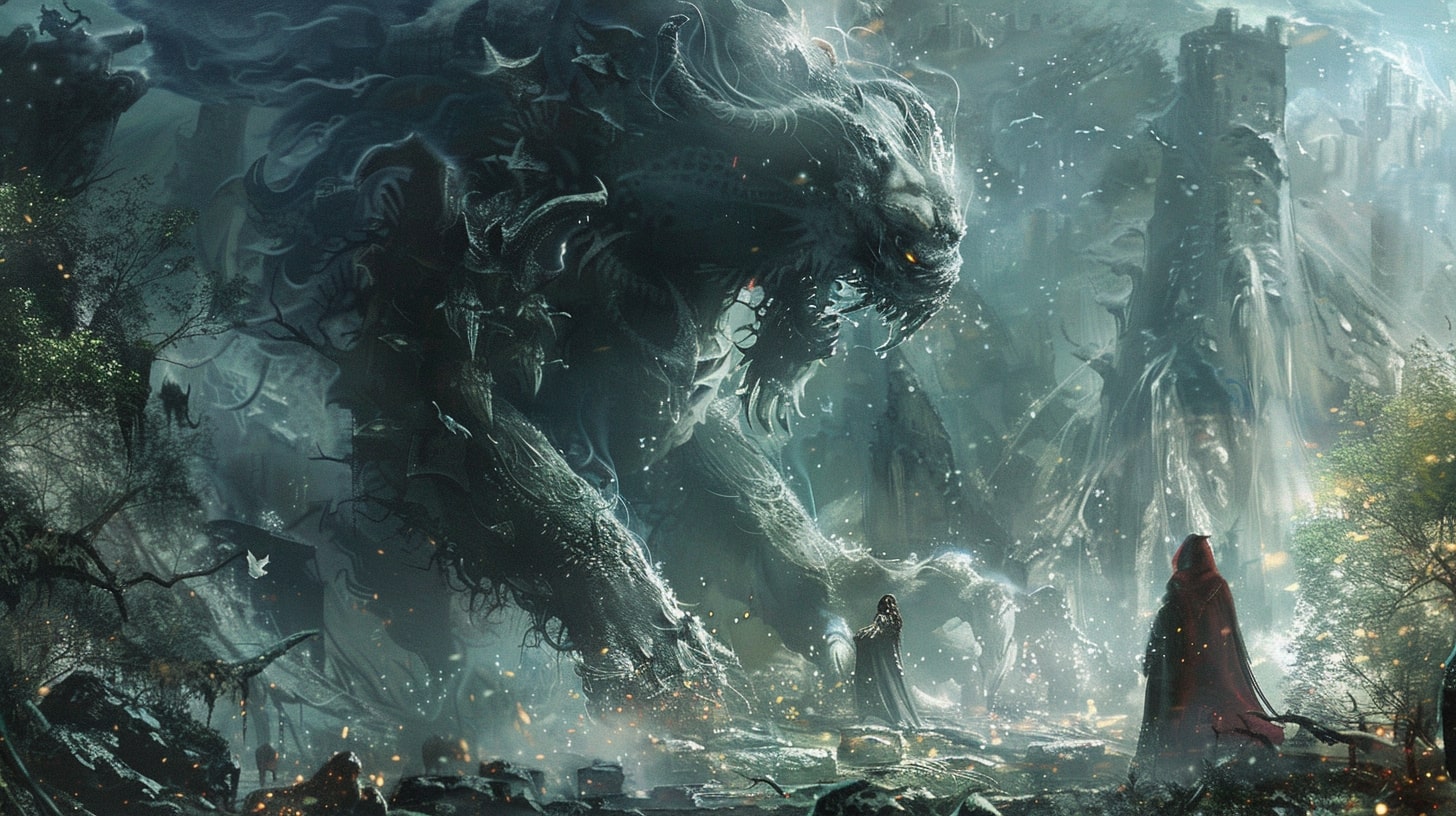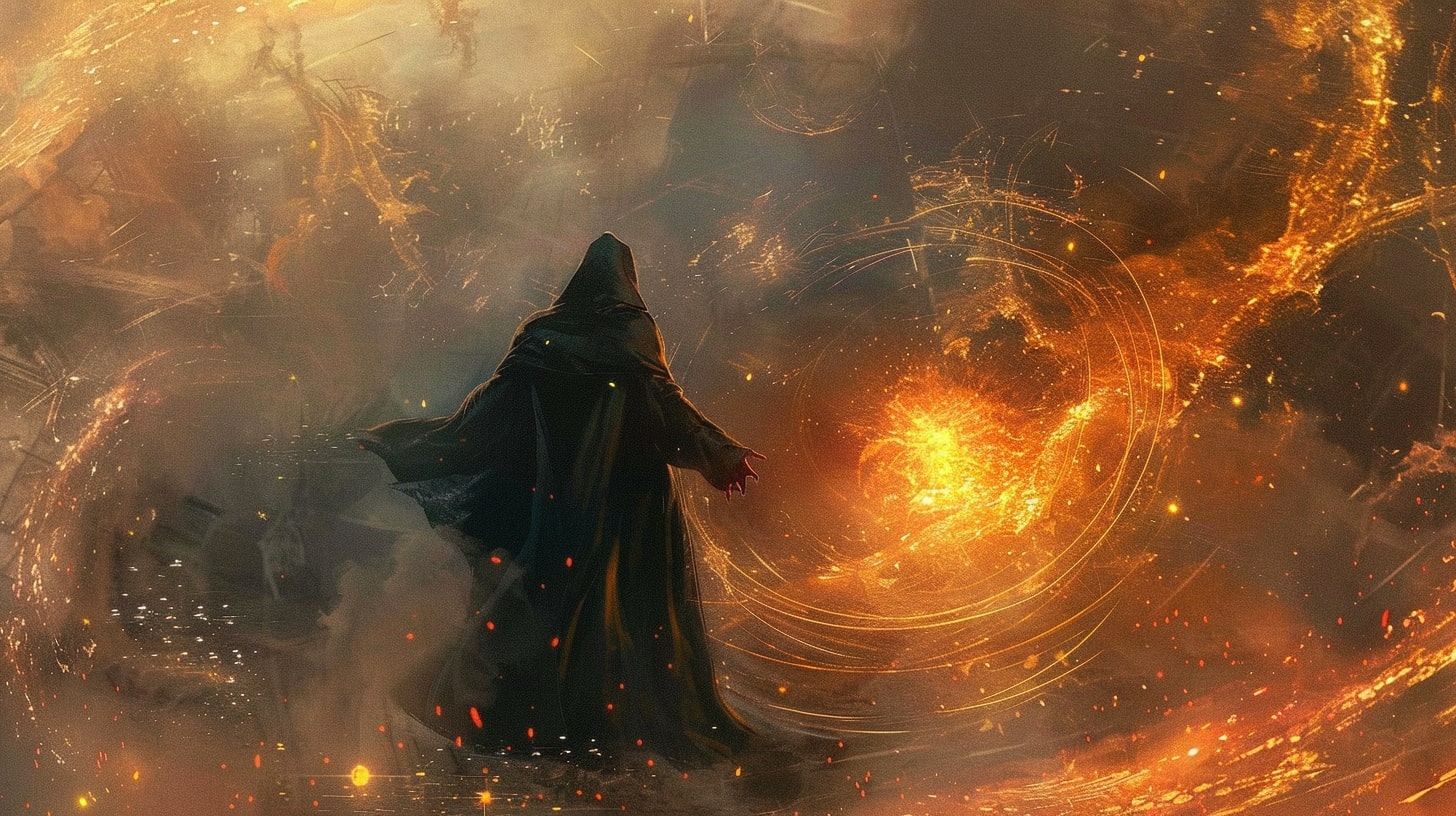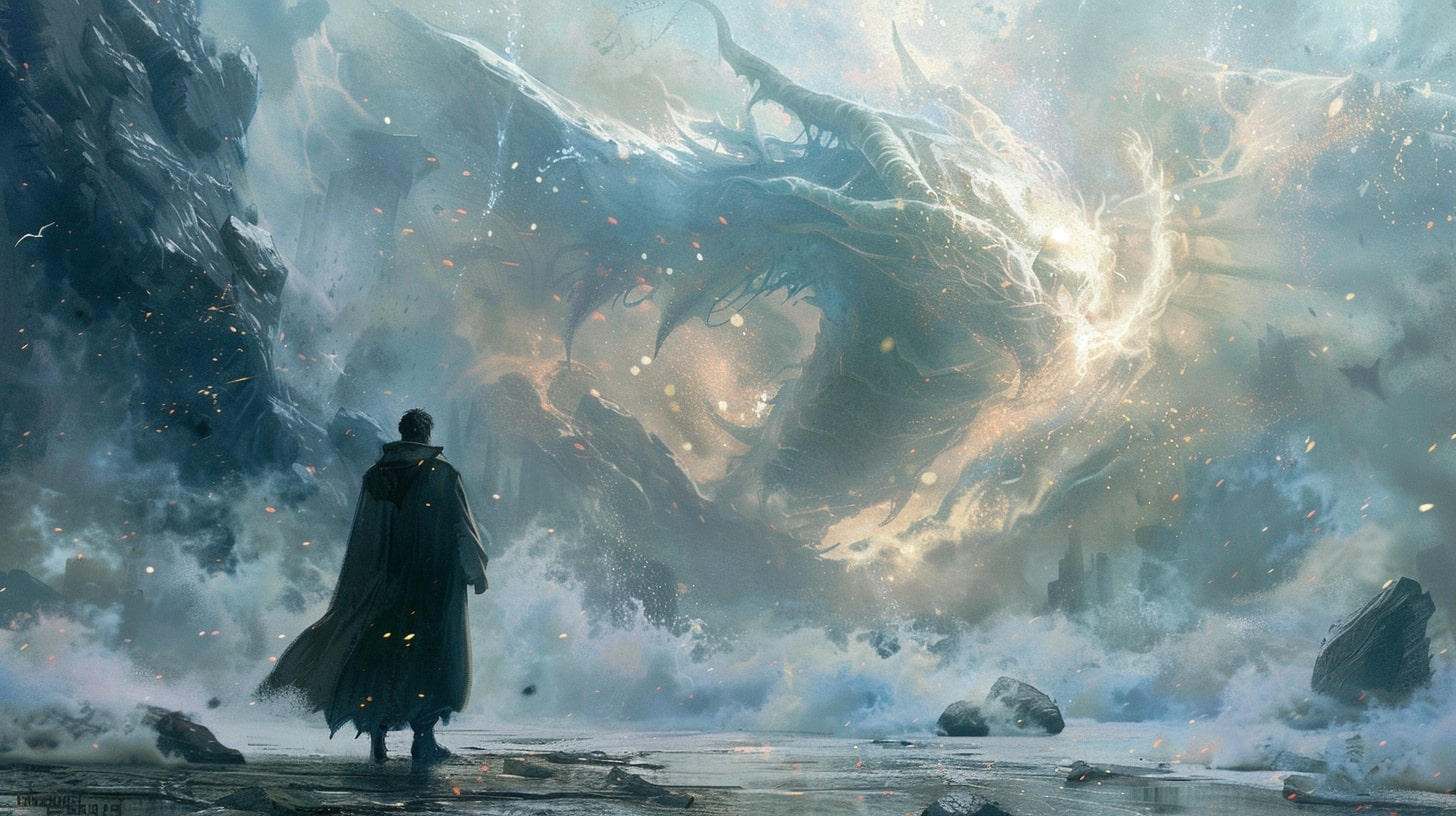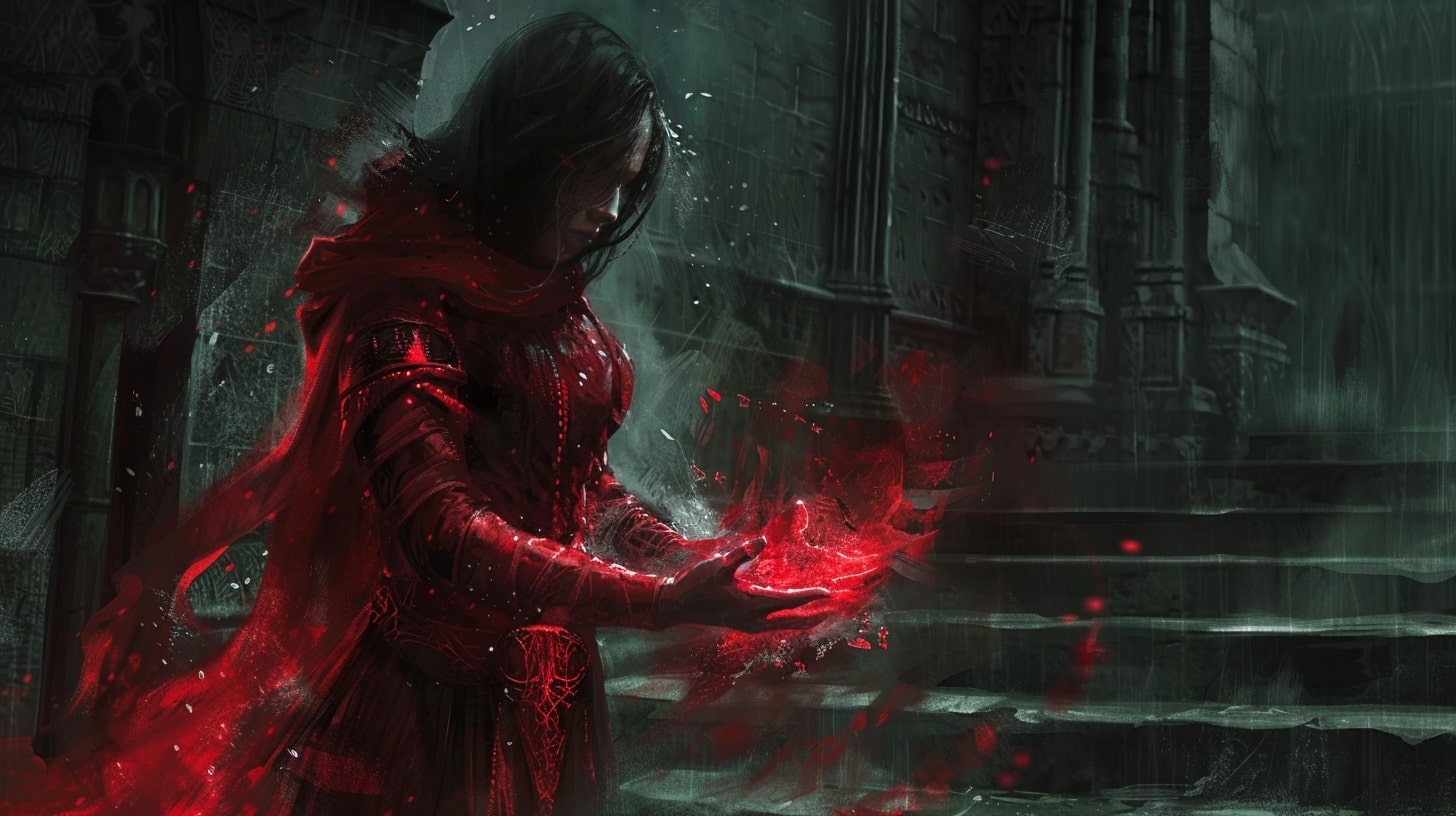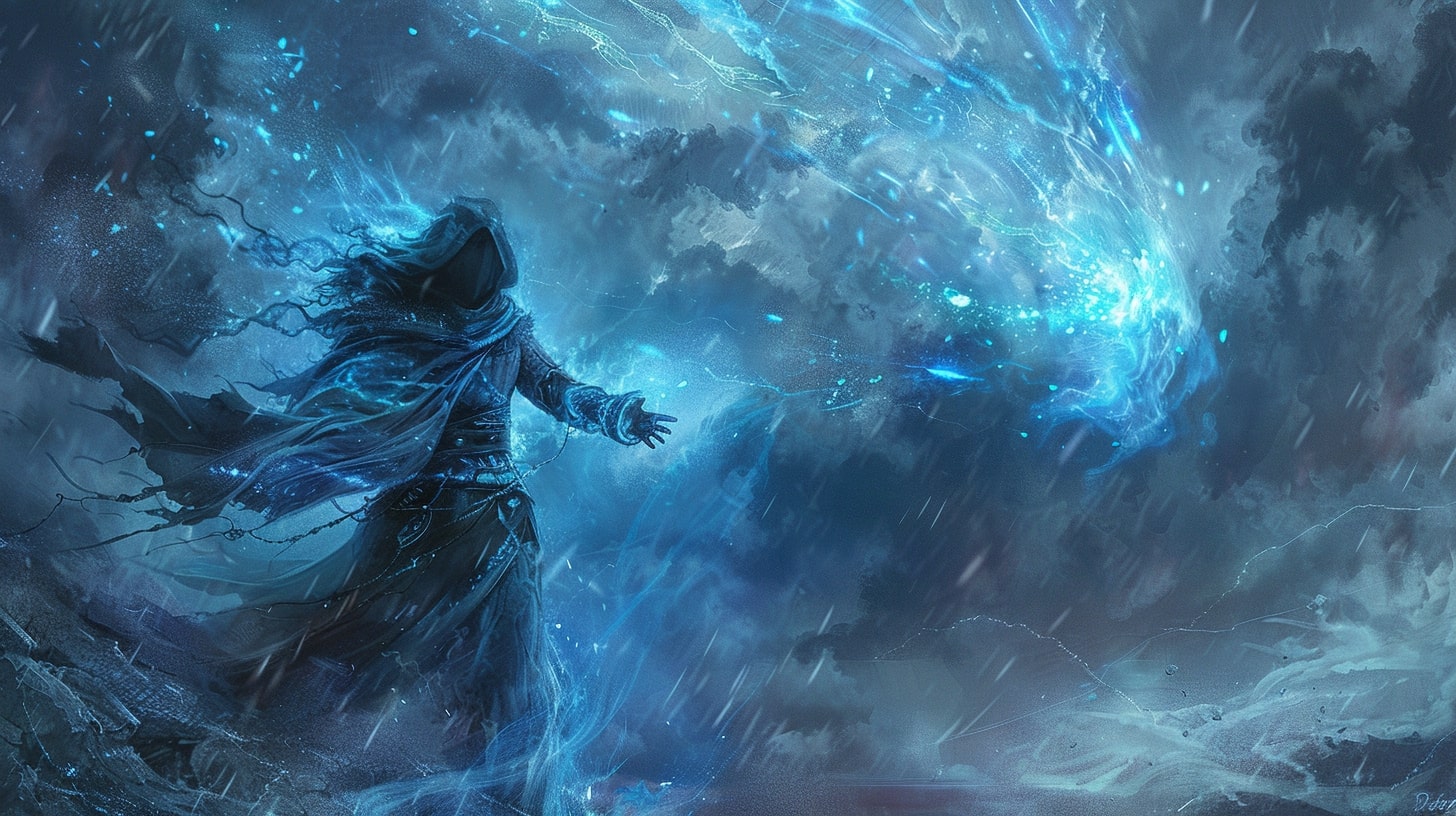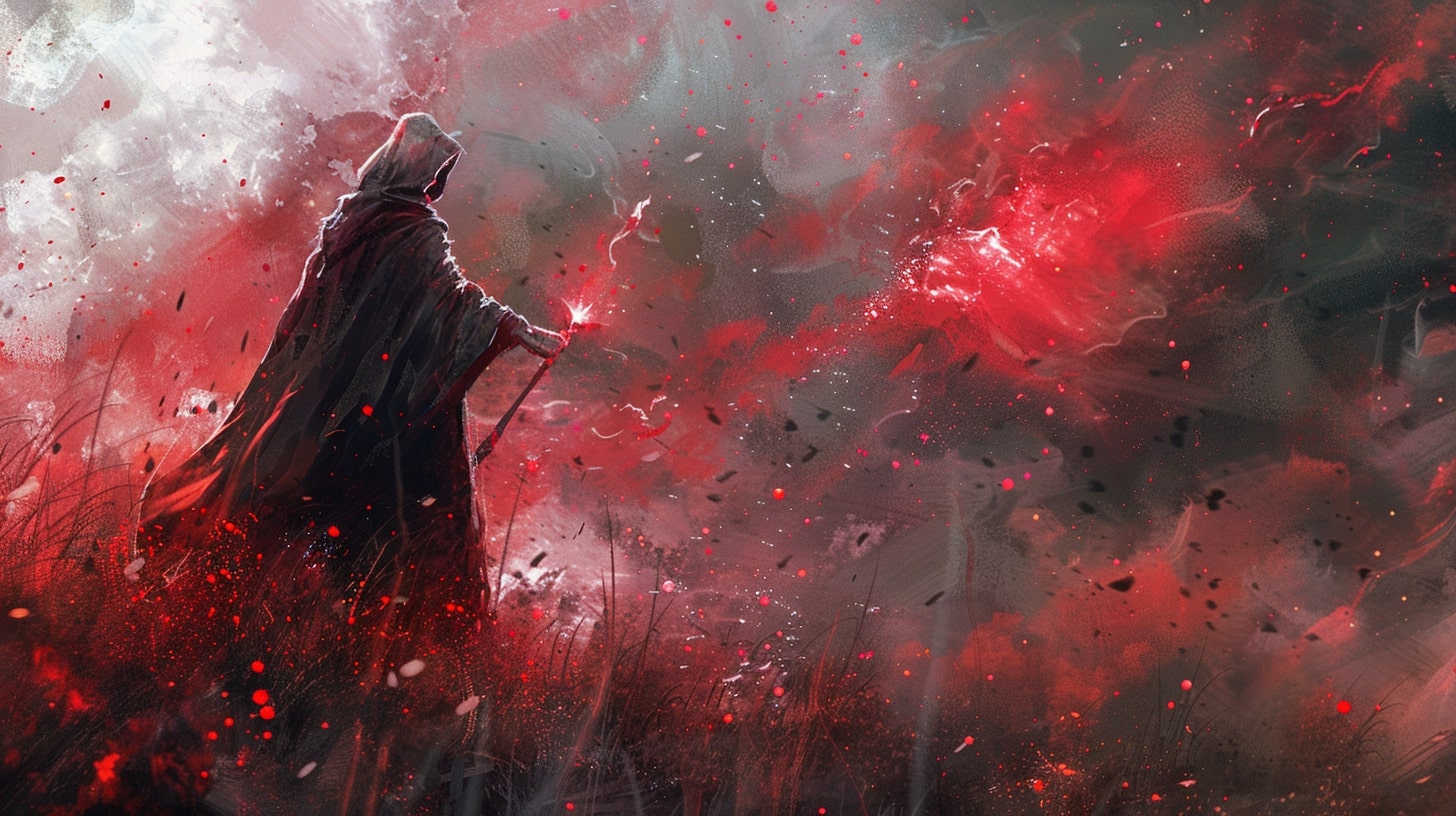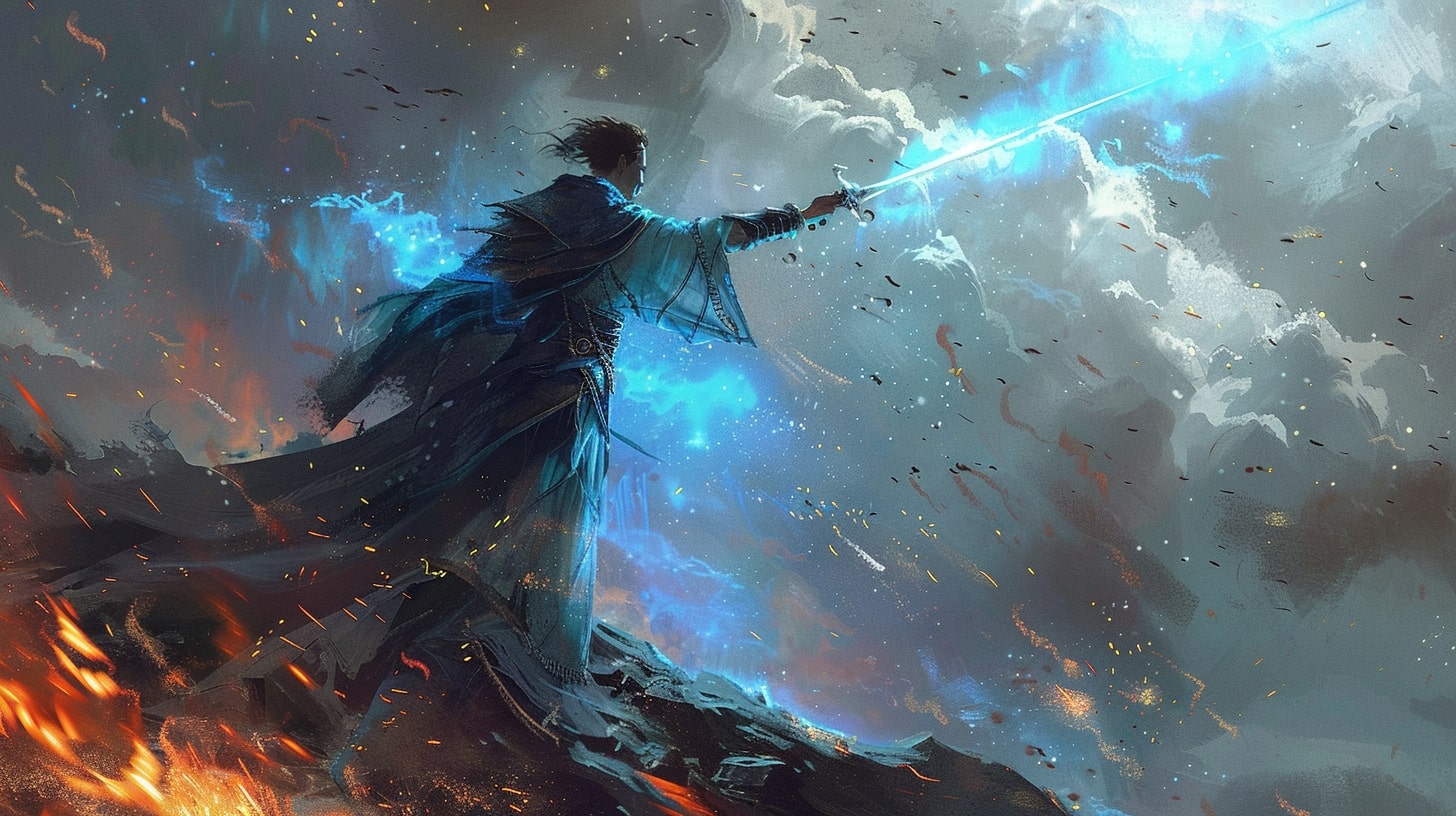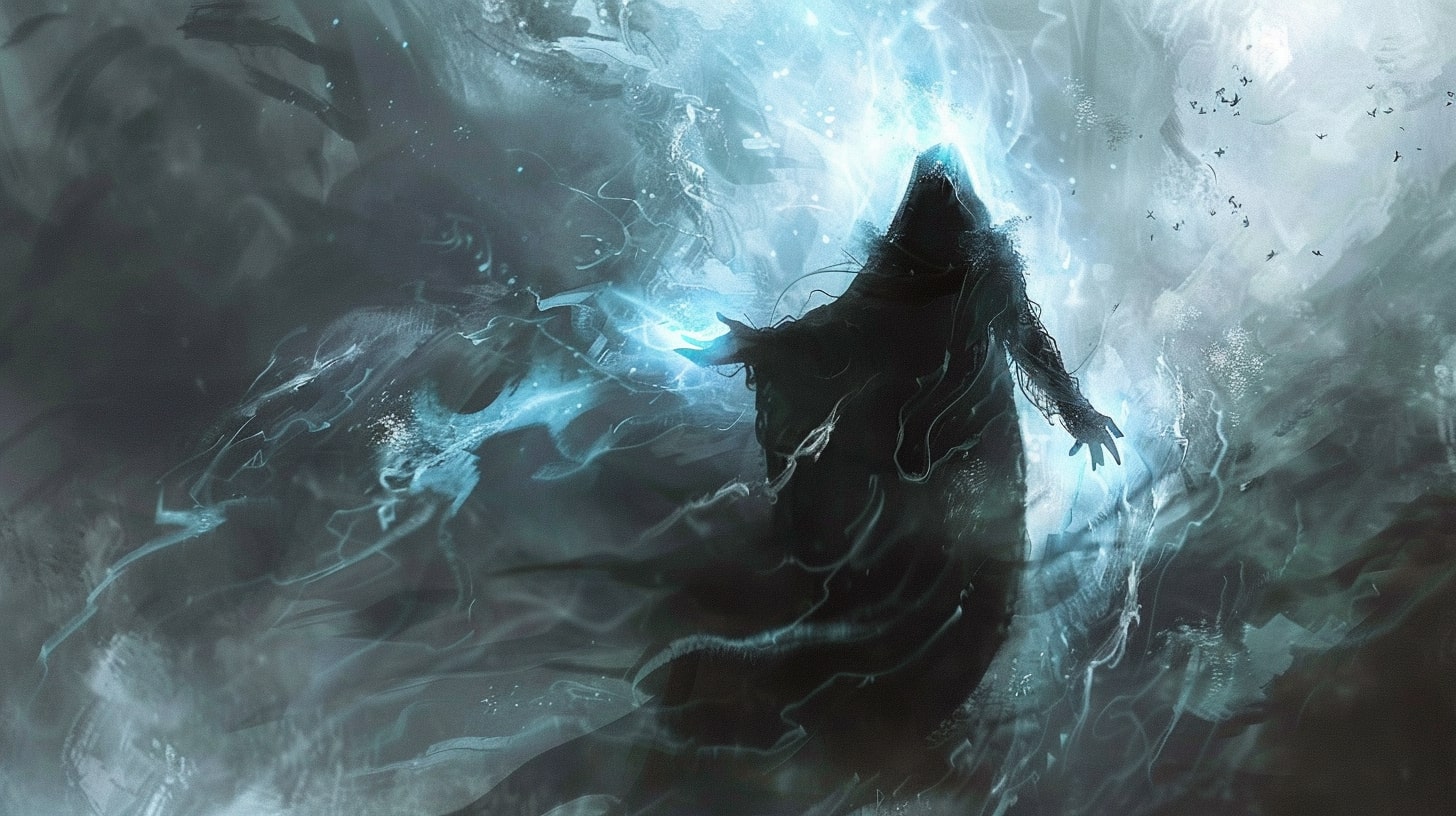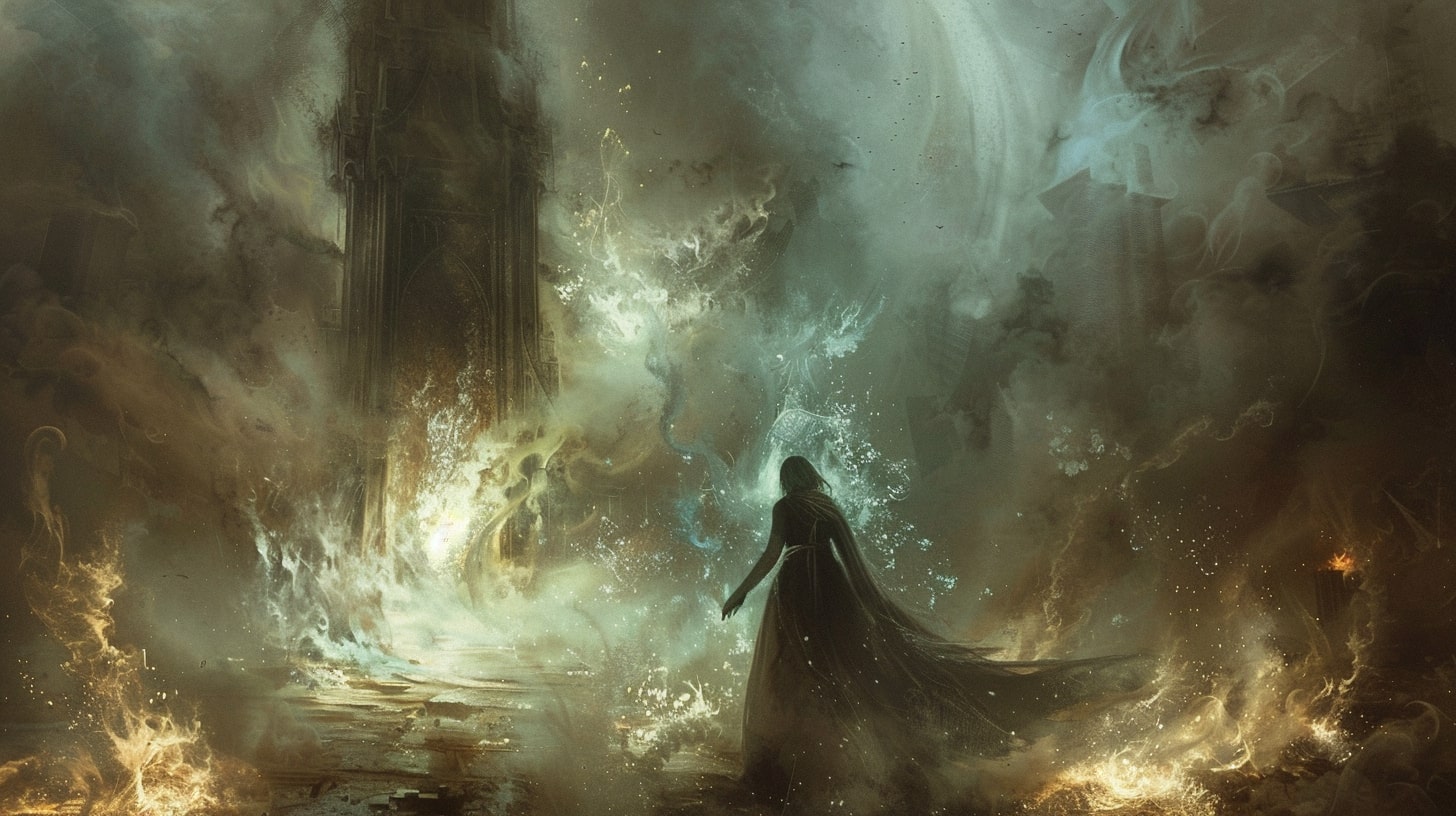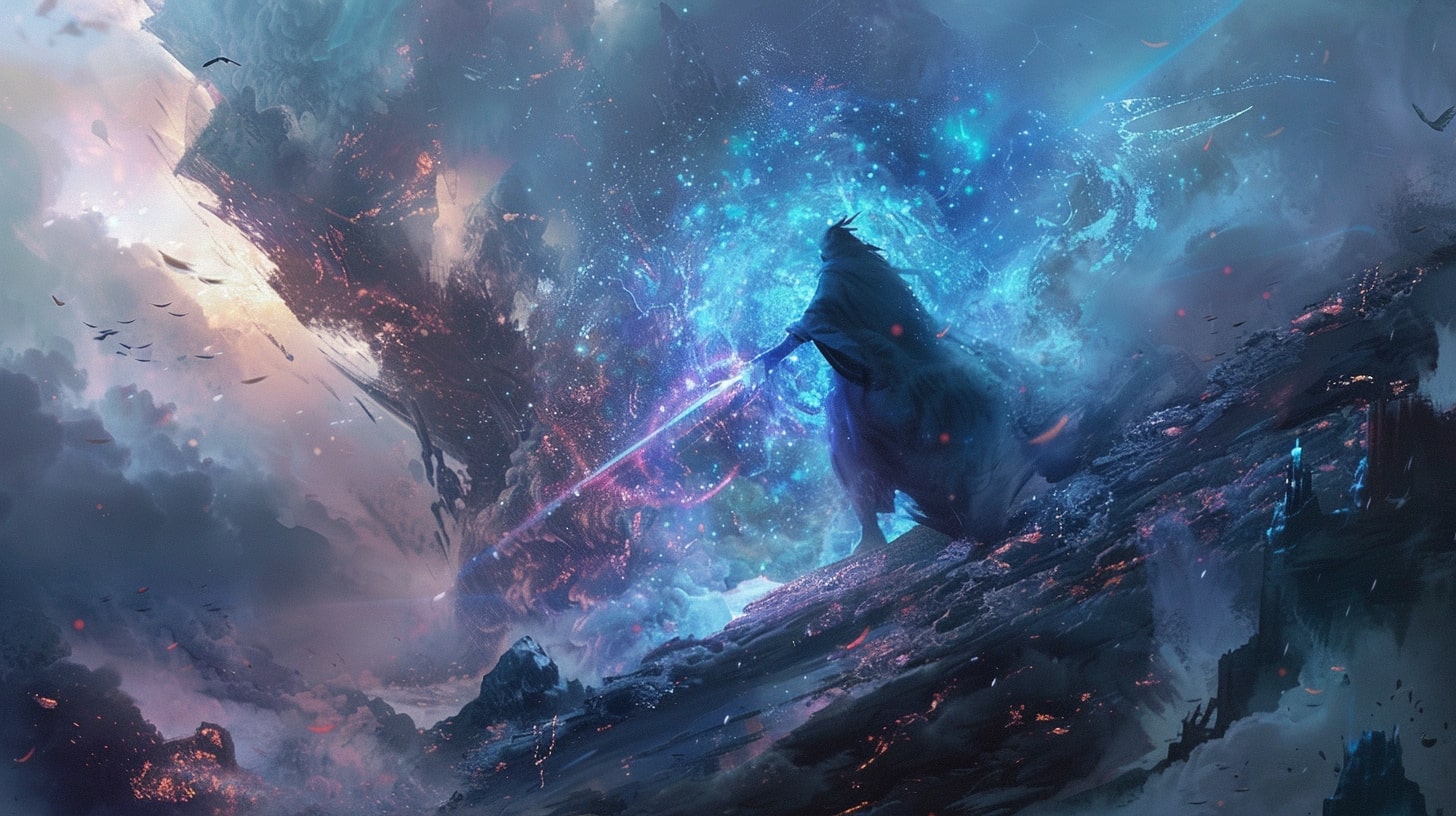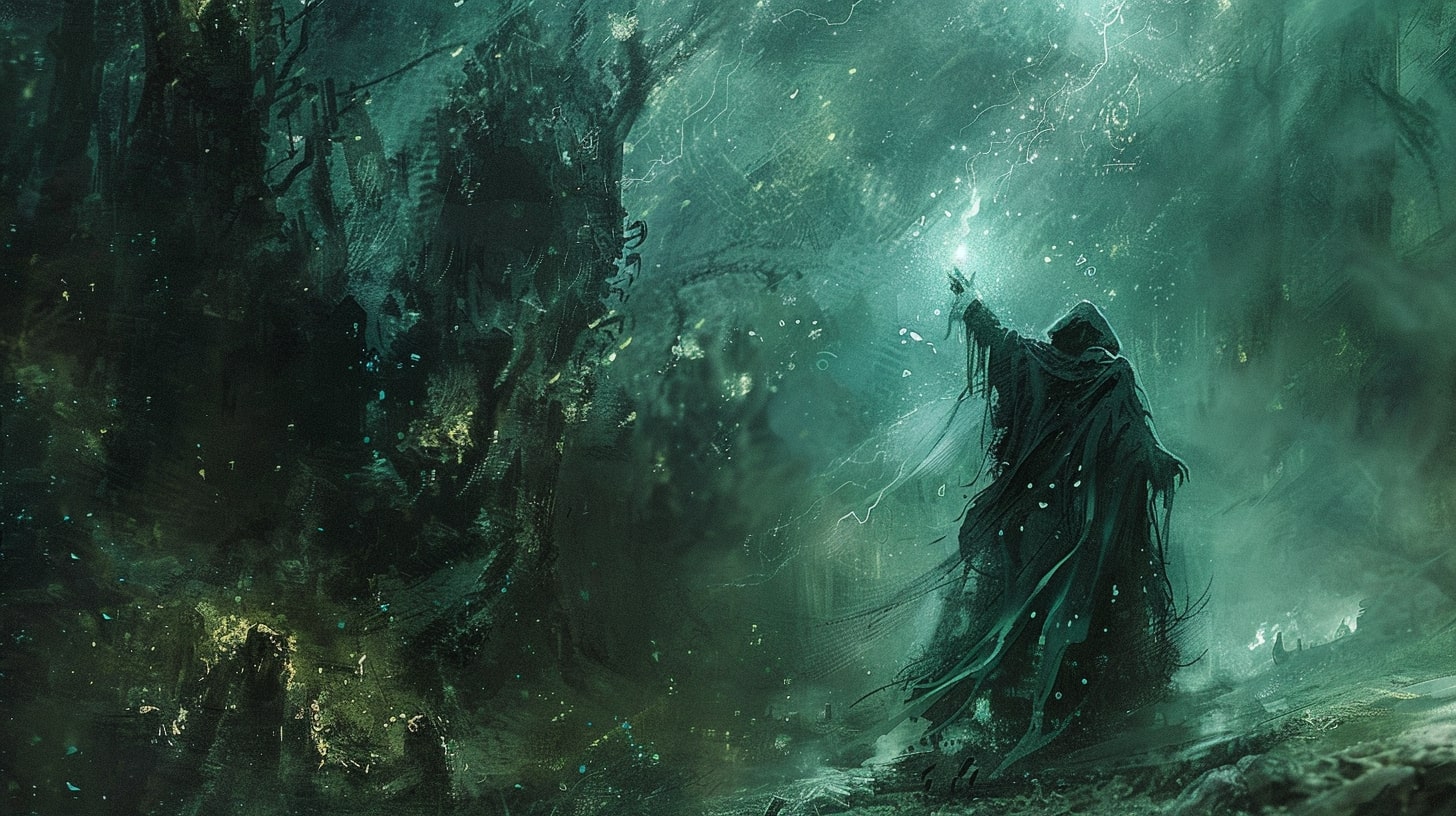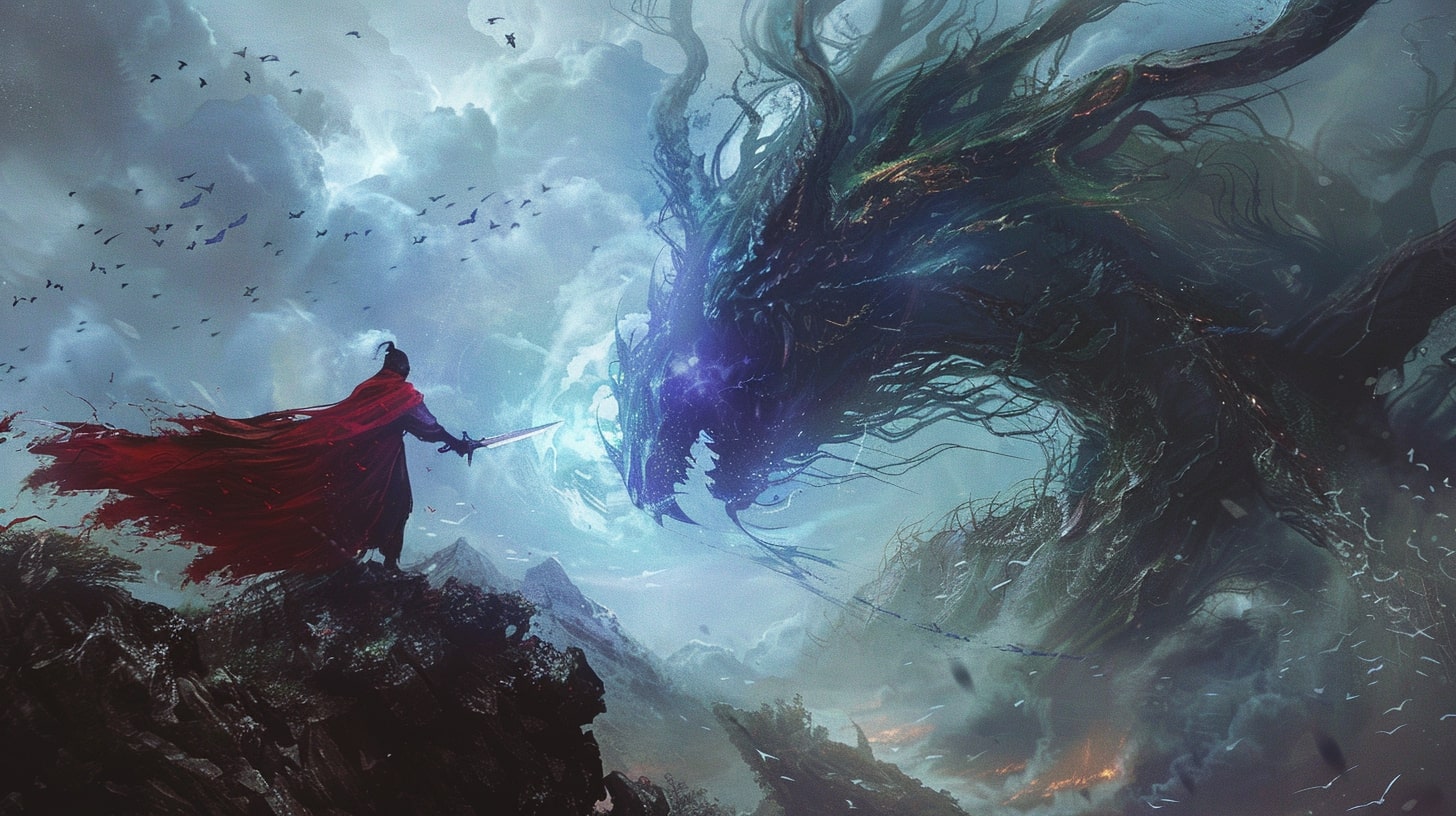Introduction to Magic Systems
Magic systems are a fundamental part of fantasy writing, providing a unique framework for the magical elements in your story. Understanding the different types of magic systems is crucial for creating a compelling and immersive narrative.
In this guide, we're going to talk about how to craft a soft magic system that allows you to better focus on the storytelling and worldbuilding. This is one of my favorite types of magic systems to create because it offers a ton of flexibility while also being challenging to get right.
Defining Soft Magic Systems
A soft magic system is one where the rules and limitations of magic are not explicitly defined or explained to the reader. The focus is more on the mysterious and wondrous aspects of magic rather than on its mechanics. This type of system allows for a high degree of flexibility and creativity, as the magic can be mysterious and unpredictable.
Soft magic systems are often used to evoke a sense of awe and wonder. They can also serve as a tool to enhance the story's atmosphere and mood. Unlike hard magic systems, where the rules are clear and consistent, soft magic systems leave much to the imagination, allowing you to craft a more fluid and mystical narrative.
Characteristics of Soft Magic Systems
Soft magic systems possess several distinct characteristics that set them apart from other types of magic systems. Here are some key traits to consider when developing your own soft magic system:
Mystery and Ambiguity: The magic's origins, rules, and limitations are often left unexplained. This creates a sense of mystery and keeps the reader guessing.
Flexibility: Since the rules are not rigid, you have the freedom to adapt and change the magic as needed to suit the story. This can be particularly useful for creating plot twists and surprises.
Emphasis on Atmosphere: Soft magic enhances the story's mood and setting. It can be used to create a haunting, whimsical, or otherworldly atmosphere. For more on integrating magic into your setting, check out our article on building a haunting world.
Character-Centric: The focus is often on how the magic affects and is perceived by the characters rather than how it works. This can help in deepening character development and relationships. For tips on character development, visit our guide on character development techniques.
Unpredictability: The lack of defined rules makes the magic unpredictable. This unpredictability can add tension and excitement to your story, keeping readers engaged.
| Characteristic | Description |
|---|---|
| Mystery and Ambiguity | Origins and rules of magic are unexplained. |
| Flexibility | Adaptable and changeable to suit the story. |
| Emphasis on Atmosphere | Enhances mood and setting. |
| Character-Centric | Focus on characters' interaction with magic. |
| Unpredictability | Magic is unpredictable, adding tension. |
Understanding these characteristics will help you build a captivating soft magic system that enhances your narrative. Consider how these traits can be woven into your story to create a magical world that feels both enchanting and believable. For more on incorporating magic into your plot, see our article on writing engaging fantasy scenes.

Building Your Soft Magic System
Creating a soft magic system for your fantasy world can be an exciting journey. It's essential to set the foundation with clear rules and limitations while developing unique magical elements that will captivate your readers.
Establishing Rules and Limitations
Even in a soft magic system, where the magic is more mysterious and less structured, establishing some rules and limitations is crucial. This helps maintain consistency and believability in your story. Consider the following aspects:
Source of Magic: Determine where the magic originates. Is it drawn from nature, ancient artifacts, or a divine entity?
Accessibility: Decide who can access the magic. Is it available to everyone, or only to specific individuals like wizards or chosen ones?
Costs and Consequences: Magic should come with a price. This could be physical exhaustion, mental strain, or even a moral dilemma.
Boundaries: Define what magic can and cannot do. This will help keep the magic system balanced and prevent characters from becoming too powerful.
| Aspect | Questions to Consider |
|---|---|
| Source of Magic | Where does the magic come from? |
| Accessibility | Who can use the magic? |
| Costs and Consequences | What are the costs of using magic? |
| Boundaries | What are the limitations of the magic? |
For more on balancing power and weaknesses, refer to our article on magic system ethics.
Developing Magical Elements
Once you have a framework of rules and limitations, it's time to develop the magical elements that will bring your soft magic system to life.
Unique Magical Abilities
Think about the types of abilities that exist in your world. These could range from elemental control to shape-shifting. Ensure these abilities align with the established rules and limitations.
- Elemental Control: Manipulating fire, water, earth, or air.
- Shape-Shifting: Transforming into animals or other beings.
- Mind Reading: Accessing thoughts and memories.
- Healing: Restoring health or curing ailments.
Symbols and Rituals
Incorporate symbols, rituals, or incantations as part of your magic system. These elements can add depth and a sense of authenticity to your world.
- Symbols: Ancient runes or glyphs that hold magical power.
- Rituals: Ceremonial practices that must be performed to invoke magic.
- Incantations: Spoken words or phrases that trigger magical effects.
| Element | Examples |
|---|---|
| Unique Abilities | Elemental control, shape-shifting, mind reading |
| Symbols | Ancient runes, glyphs |
| Rituals | Ceremonial practices |
| Incantations | Spoken words or phrases |
Explore different types of magical systems, such as a symbolic magic system or a music-based magic system, for inspiration.
By establishing clear rules and developing magical elements, you can create a mesmerizing soft magic system that enhances your story and captivates your readers. For additional guidance on creating a believable world, check out our article on building a fantasy world.
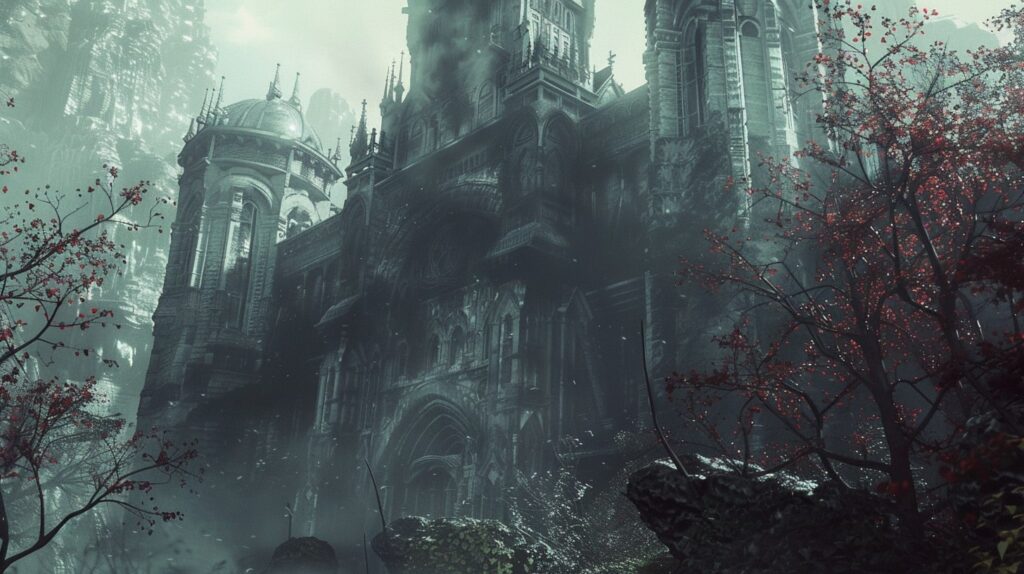
Creating a Believable World
Integrating Magic into the Setting
To create a believable world with a soft magic system, you must seamlessly weave magic into the fabric of your setting. This integration helps your readers accept the magical elements as a natural part of the world you've created.
First, consider the geography of your world. Does magic affect the landscape? Are there enchanted forests, mystical rivers, or floating islands? Describe how magic shapes the natural environment, making it unique and immersive.
Next, think about the architecture. How do buildings and structures reflect the presence of magic? Do wizards' towers defy gravity, or are there ancient ruins with lingering enchantments? Ensure that the magical influence is evident in the physical structures within your world.
Also, pay attention to daily life. How do ordinary people interact with magic? Is it part of their daily routines, or is it reserved for special occasions? This interaction can range from simple magical conveniences to complex rituals, adding depth to your setting.
Consider how different regions or cultures within your world perceive and utilize magic. Some areas might embrace it fully, while others fear or shun it. This variation can lead to interesting dynamics and conflicts in your story.
For more detailed guidance on integrating magic into your setting, explore our article on building a haunting world.
Considering Cultural Impacts
Magic doesn't exist in a vacuum; it has profound impacts on the culture and society of your world. To create a rich and believable setting, consider how magic influences various cultural aspects.
Religion and Beliefs: Magic can shape religious practices and beliefs. Are there deities associated with magic? Are there sacred texts or prophecies? Religious institutions might wield magical power or condemn its use. Exploring these dynamics can add layers to your story.
Social Hierarchy: Magic can affect social structures and hierarchies. Are magic users revered or ostracized? Is there a ruling class of powerful sorcerers, or is magic accessible to everyone? These questions help define the societal framework of your world.
Economy: Consider how magic impacts the economy. Are there magical resources that are valuable and traded? Do certain professions rely on magical abilities? This can influence trade, wealth distribution, and even conflict within your world.
Education and Knowledge: How is magic taught and passed down? Are there academies, secret societies, or apprenticeships? The methods of learning magic can shape the intellectual landscape and create opportunities for character development.
Art and Culture: Magic can inspire art, music, and literature. Are there magical performances, enchanted paintings, or epic tales of legendary mages? This cultural expression enriches your world and provides context for your characters' experiences.
To delve deeper into the cultural aspects of worldbuilding, check out our article on worldbuilding societies.
By integrating magic into your setting and considering its cultural impacts, you create a believable world that captivates your readers. For more tips on building an immersive fantasy world, visit our article on building a fantasy world.

Crafting Unique Abilities
Types of Magical Abilities
When designing a soft magic system, the types of magical abilities you create can greatly influence the allure and depth of your world. Soft magic systems often rely on a sense of wonder and mystery, with less rigidly defined rules than hard magic systems. Here are a few categories of magical abilities to consider:
- Elemental Magic: Control over natural elements like fire, water, earth, and air.
- Healing Magic: The ability to mend wounds, cure diseases, or even revive the dead.
- Illusion Magic: Creating illusions or altering perceptions to deceive or entertain.
- Telekinesis: Moving objects with the mind.
- Transformation: Changing the form of oneself or others.
- Divination: Foreseeing the future or gaining insight into hidden truths.
- Summoning: Calling forth creatures or entities to assist or protect.
For more inspiration on integrating unique types of abilities, check out our article on symbolic magic systems.
Balancing Power and Weaknesses
In a soft magic system, balancing the power of magical abilities with their weaknesses is crucial to maintain tension and believability in your story. Here are some considerations to keep in mind:
- Limitations: Define clear limitations for each ability. For example, a healer might be unable to cure fatal wounds or a summoner may only call forth creatures for a limited time.
- Costs: Introduce costs associated with using magic. This could be physical exhaustion, aging, or even loss of a precious resource.
- Unpredictability: Allow for a degree of unpredictability in the magic, adding a layer of risk and excitement. Magic might fail at crucial moments or have unintended consequences.
- Moral Dilemmas: Incorporate ethical considerations. For instance, a character with powerful magic might face moral dilemmas about when and how to use their abilities. For more on this, see our article on magic system ethics.
| Ability Type | Limitation | Cost | Unpredictability |
|---|---|---|---|
| Elemental Magic | Limited to one element | Physical exhaustion | Elements may react unpredictably |
| Healing Magic | Cannot heal fatal wounds | Personal energy depletion | Healing might not always work |
| Illusion Magic | Temporary effects | Mental strain | Illusions might become self-aware |
| Telekinesis | Limited weight | Headaches | Objects may move erratically |
| Transformation | Time-limited | Accelerated aging | Risk of being stuck in another form |
| Divination | Vague visions | Loss of sight | Misinterpretation of visions |
| Summoning | Short duration | Loss of vitality | Summoned creatures may turn hostile |
Balancing the strengths and weaknesses of your magical abilities will add depth and complexity to your story. By carefully considering these aspects, you create a richer, more engaging narrative that captivates readers. For more tips on developing your fantasy world and integrating magic, check out our guide on building a fantasy world.
Writing Magic in Your Story
Incorporating a soft magic system into your narrative can add depth and intrigue to your fantasy world. This section will guide you on how to weave magic into your plot development and showcase it through your characters.
Incorporating Magic in Plot Development
A soft magic system, with its undefined and mysterious nature, can be a powerful tool for driving your plot forward. Here are some ways to incorporate magic into your plot development:
Mystery and Uncertainty: Use the ambiguity of soft magic to create suspense and intrigue. Characters might encounter magical phenomena they don't fully understand, leading to unexpected twists and turns.
Conflict and Resolution: Magic can be both a source of conflict and a means of resolution. A character might struggle with controlling their abilities, or a magical event could disrupt the status quo, prompting a quest for answers.
Character Growth: The journey to understand and harness magic can parallel a character's personal growth. This can be particularly effective in coming-of-age stories or tales of self-discovery.
Cultural Significance: Integrate magic into the cultures and societies within your world. Different groups might have varying beliefs and practices related to magic, adding layers to your plot. For more on this, see worldbuilding societies.
| Element | Role in Plot Development |
|---|---|
| Mystery and Uncertainty | Creates suspense and intrigue |
| Conflict and Resolution | Source of conflict and means of resolution |
| Character Growth | Parallels personal development |
| Cultural Significance | Adds depth to worldbuilding |
Showcasing Magic Through Characters
Magic in your story should be reflected through your characters' actions, interactions, and development. Here are some tips for showcasing magic through your characters:
Magical Abilities: Define the unique abilities of your characters and how they manifest. These abilities can be linked to their personality, background, or emotional state. For inspiration, explore different types of magical abilities.
Internal Struggles: Characters with magical abilities often face internal conflicts. They might struggle with fear, responsibility, or the temptation to misuse their powers. This adds depth to their character arc.
Relationships and Dynamics: Magic can influence relationships and dynamics between characters. It could create bonds or rivalries, depending on how characters perceive and react to each other's abilities.
Mentorship and Learning: Introduce a mentor archetype to guide characters in understanding their magic. This mentorship can be a key element in their development and the unfolding of the magic system.
Cultural and Ethical Implications: Characters' use of magic should reflect the cultural and ethical landscape of your world. Their actions can spark debates and conflicts, enriching the narrative. For more on this, see magic system ethics.
| Aspect | Example |
|---|---|
| Magical Abilities | Linked to personality or background |
| Internal Struggles | Fear, responsibility, temptation |
| Relationships and Dynamics | Bonds or rivalries influenced by magic |
| Mentorship and Learning | Guidance from a mentor figure |
| Cultural and Ethical Implications | Actions reflecting societal norms |
By thoughtfully incorporating magic into your plot and characters, you can create a captivating and immersive story. Explore different techniques and develop your unique approach to utilizing a soft magic system in your writing. For more tips on crafting engaging fantasy scenes, visit writing engaging fantasy scenes.
Refining Your Soft Magic System
Crafting a soft magic system is an ongoing process. To ensure it remains engaging and coherent, refining your system through feedback and continuous development is essential.
Seeking Feedback and Iterating
Feedback is invaluable in polishing your soft magic system. Sharing your ideas with fellow writers or beta readers can provide new perspectives and highlight potential issues.
- Beta Readers: Share drafts with trusted beta readers who understand the fantasy genre. They can offer insights on how your magic system impacts the story and characters.
- Writing Groups: Join writing communities or groups where you can exchange feedback and discuss ideas. This can help you see your magic system from different angles.
- Surveys and Polls: Create surveys or polls to gather specific feedback on elements of your magic system. Ask questions about clarity, consistency, and overall appeal.
Incorporating feedback requires an iterative process. You may need to revise and refine your system multiple times. Consider the following steps:
- Collect Feedback: Gather all feedback and categorize it based on common themes.
- Identify Patterns: Look for recurring suggestions or criticisms.
- Revise: Make necessary changes to address the feedback, ensuring your magic system remains cohesive.
Continuously Developing and Expanding
A soft magic system should evolve with your story. Continuous development and expansion keep it fresh and engaging.
- Worldbuilding: Integrate new magical elements as your world and plot develop. For more on worldbuilding, see our article on building a fantasy world.
- Cultural Integration: Consider how your magic system influences and is influenced by the cultures within your story. Explore worldbuilding societies for ideas.
- Character Evolution: As characters grow, their understanding and use of magic should evolve. This adds depth and realism to your story. For character growth tips, visit character development techniques.
| Development Stage | Focus Area | Action |
|---|---|---|
| Initial Feedback | Beta Readers | Share drafts, gather insights |
| Early Revisions | Writing Groups | Discuss ideas, exchange feedback |
| Detailed Analysis | Surveys/Polls | Collect specific feedback |
| Iterative Revision | Consistency | Revise based on patterns |
| Continuous Development | Worldbuilding | Integrate new elements |
| Expansion | Cultural Impact | Explore societal influences |
| Character Growth | Evolution | Develop characters' magic use |
Continuously refine your soft magic system to keep it dynamic and captivating. For more on integrating magic into your story, explore writing engaging fantasy scenes.




